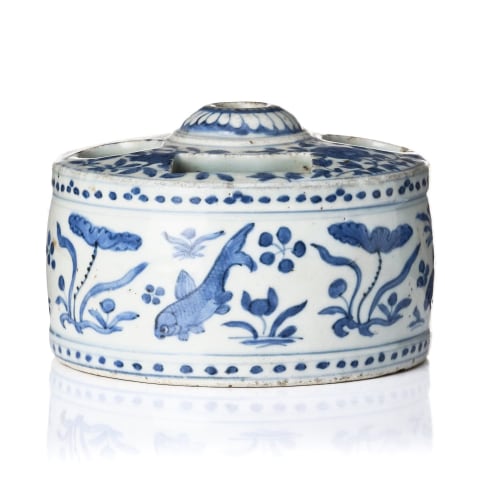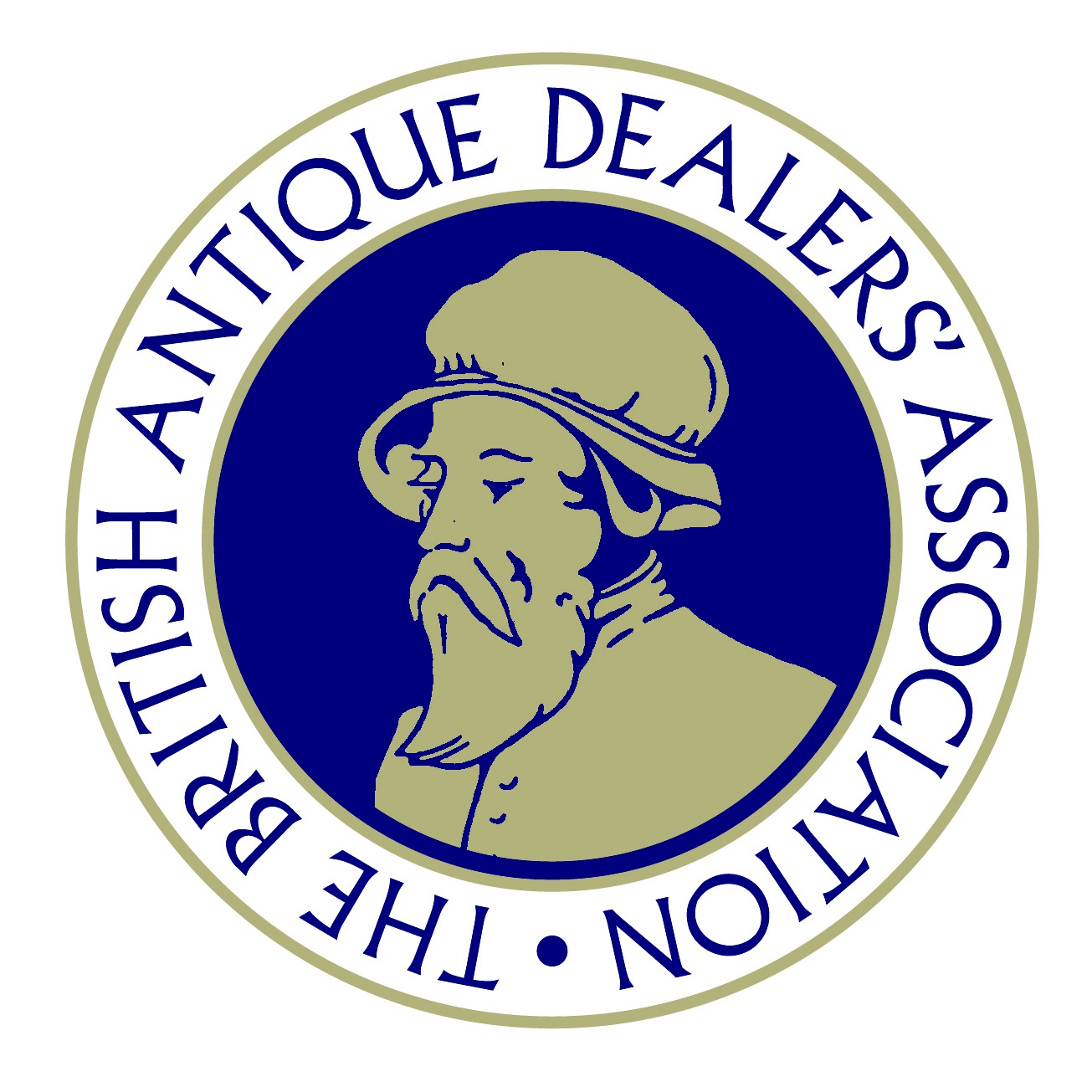A RARE CHINESE MING BLUE AND WHITE BRUSHPOT, INKSTAND, Jiajing (1522-1566 ) / Wanli (1573-1619)
Diameter 13.2 cm.
Height 9.3 cm.
BJ08
Height 9.3 cm.
BJ08
The hollow drum-shaped porcelain brush and ink-stick stand has a slightly domed top with four circular openings and one rectangular opening. Decorated in shades of underglaze blue with freely drawn...
The hollow drum-shaped porcelain brush and ink-stick stand has a slightly domed top with four circular openings and one rectangular opening. Decorated in shades of underglaze blue with freely drawn fish and lotus in a pond between two bands of dots, the top with flowering blossoms.
Provenance
From the Collection of Dr Emil Hultmark (1872-1943), Stockholm, thence by descent within the family.
Regarding the provenance:
Dr. Emil Hultmark was an art historian, collector, donor and patron of the arts. He was one of the co-founders of the 'Kinaklubben' (China Club) in Stockholm in the 1920's together with Carl Kempe (1884-1967) and the Crown Prince Gustav Adolf.
Exhibitions
Exhibited at Svenska Allmänna Konstföreningen, Emil Hultmarks Samling, Stockholm 1942. catalogue no. 388.Literature
The Ming scholar Wen Zhenheng records in his writing, Changwu Ji ( Notes on Superfluous Things) that drum-shaped brush pots were made to hold ink sticks and brushes. It would appear to have been designed to hold three brushes pointing with their tips straight upwards in the circular apertures, as illustrated in one painting of the famous 15th century neo-confucianist philosopher Wang Yangming (see Fong Wen, Images of the Mind, Princeton, 1984, p.351); the rectangular aperture being intended to take the ink stick. This type of porcelain brush pot is rare and few appear to have been made, perhaps due to their poor design for the intended purpose: the depth of the stand would make it difficult to keep the brushes upright and ink sticks would be difficult to retrieve, as they shortened with use.A similar example with a lotus pond scene, freely drawn like ours illustrated here and dated to the Jiajing period is in The Complete Collection of Treasures of the Palace Museum - 35 - Blue and White Porcelain with Underglaze Red, Hong Kong, 2000, pl. 114; another example, also decorated with fish, can be found in the collection of the British Museum, London. This example is Jiajing mark and period, and is illustrated in J.Harrison-Hall, Ming Ceramics in the British Museum, London, 2001, p.229, no.9:31. One with phoenix between decorative borders from the Jiajing period is illustrated by G. Tsang and H. Moss, Arts from the Scholar's Studio, Oriental Ceramic Society, Hong Kong 1986, pp. 226-7, no. 212; and another with a band of egrets Oriental Ceramic Society, Research Display of Chinese Sixteenth Century Ceramics, British Museum, London, 1994, no.44 (illustrated p.6). A further Wanli example, similarly decorated with egrets, may be found in the collection of the Metropolitan Museum, New York, object number 17.161. 1917. View an example from our archived sold objects here
For this type of drum brush stand, they either have the mark of the period which appears in most cases to be Jiajing or a four character commendation mark. Based on the composition and style of painting in the example of the Jiajing brush stand illustrated in the Palace Collection they date to Jiajing there is a strong possibility that our brush stand is of the Jiajing period. However, there is an interesting example in Tokyo National Museum: Asia House 1977. p94, no52 decorated in red and gold kinrande style and this is dated by inscription to the first year of the reign of Wanli, 1573.
Fish are a symbol of wealth in Chinese culture. The combination of a fish and a lotus-blossom is used to express the wishes of living in affluence

